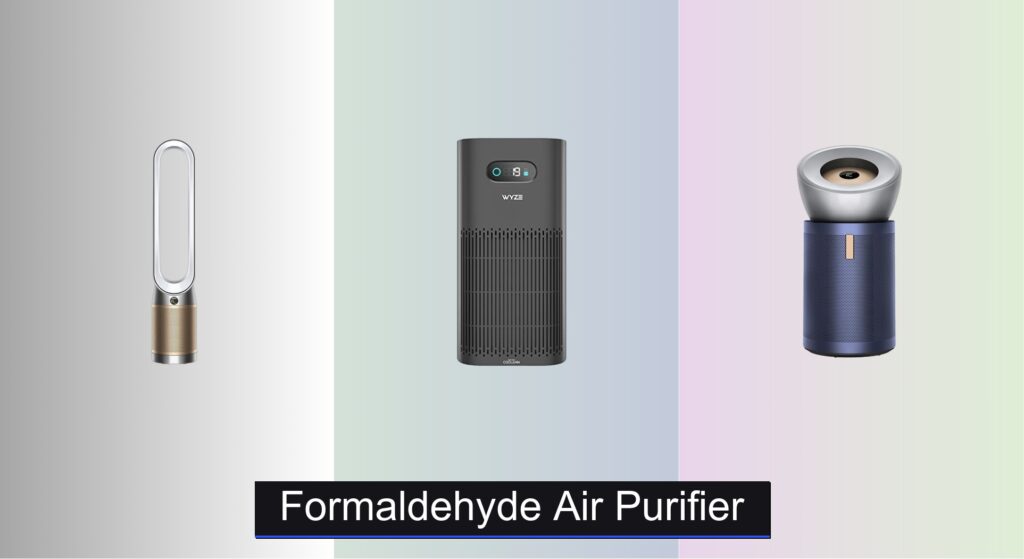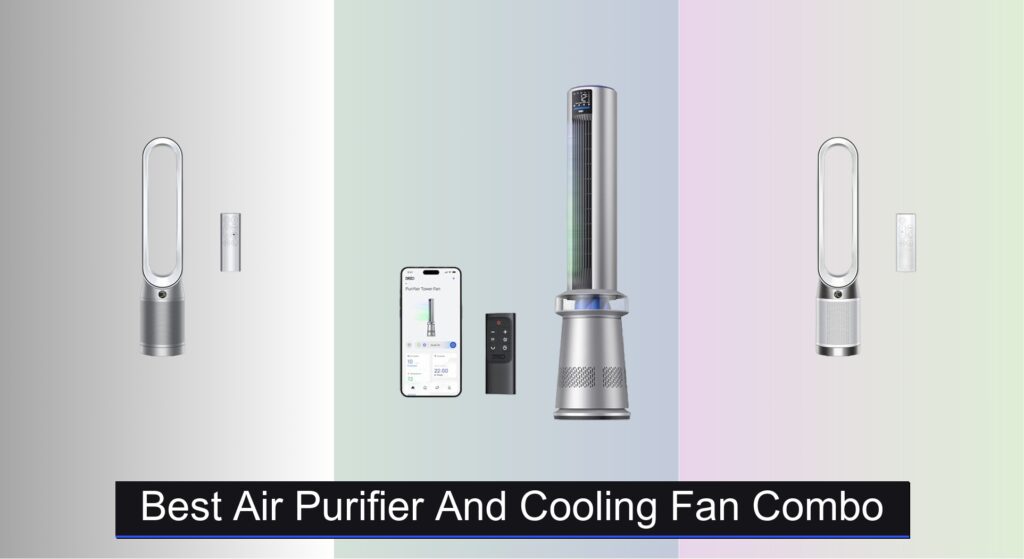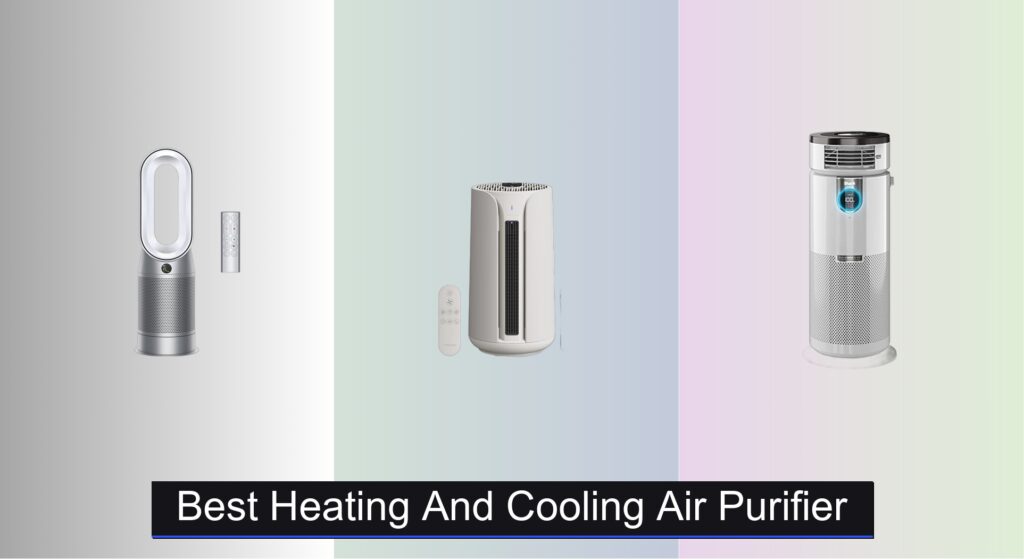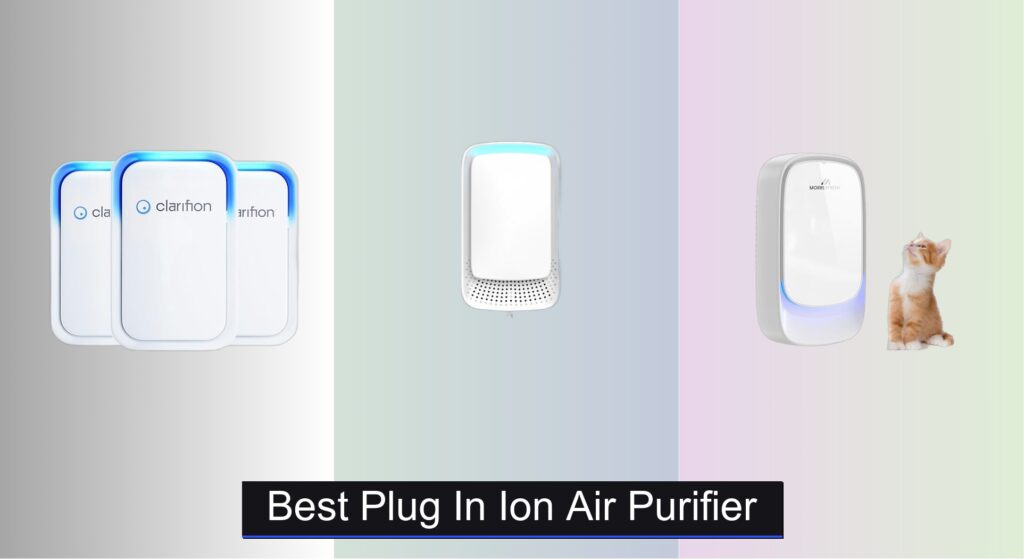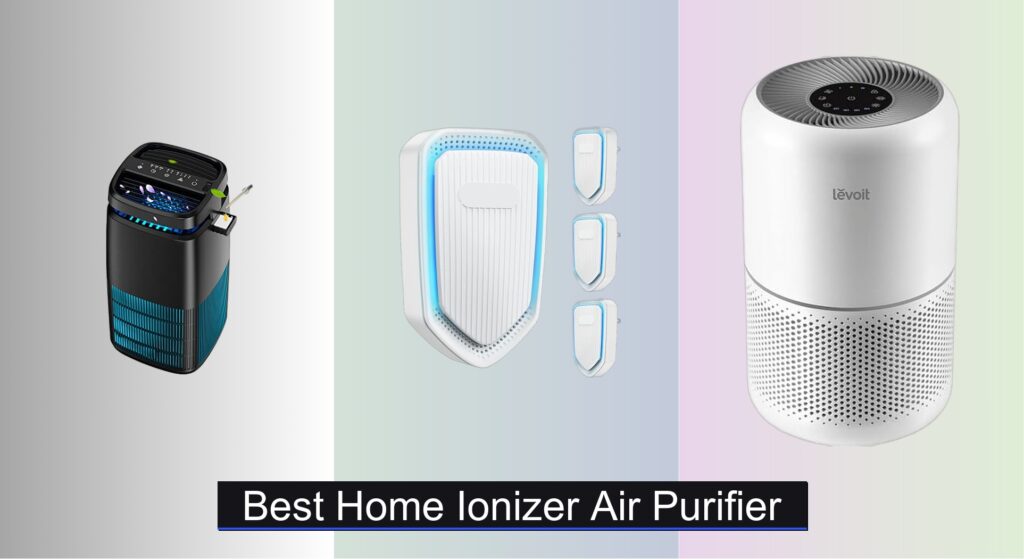Exposure to formaldehyde—a colorless, pungent gas emitted by furniture, flooring, and household products—is a growing concern for indoor air quality. This harmful volatile organic compound (VOC) can cause respiratory irritation, headaches, and long-term health risks, especially in tightly sealed modern homes. Many standard air purifiers fail to address gaseous pollutants, leaving households vulnerable despite clean-looking air.
The right formaldehyde air purifier goes beyond HEPA filtration by incorporating heavy-duty activated carbon or advanced decomposition technology to neutralize VOCs at a molecular level. We analyzed over 40 models, prioritizing proven formaldehyde removal, room coverage, filter longevity, and smart monitoring features. Our top picks deliver real protection—not just promises—backed by AHAM verification, high carbon content, and reliable performance data. Keep reading to discover the best formaldehyde air purifiers for safer, healthier indoor air.
Best Options at a Glance
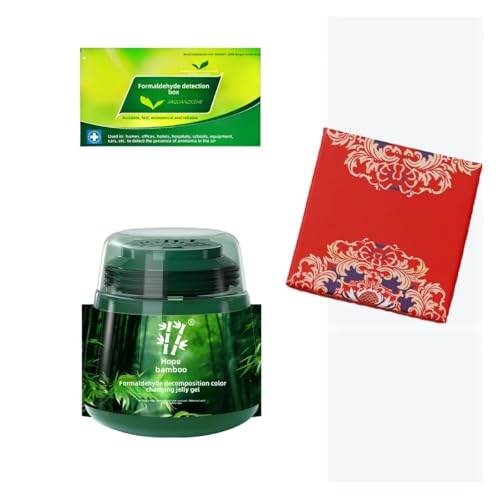
Formaldehyde Decomposition Gel
Best No Electricity Option
- 24H
- Tap-Activate
- No Electricity
- Home/Office/Car
- Test Reagent, Bracelet

Wyze Air Purifier with Formaldehyde Filter
Best Budget Friendly
- 500 ft”²
- 350 m”³/h
- 21-54 dB
- HEPA 13
- WiFi/Alexa/Google

Shark NeverChange Compact Pro Air Purifier
Best Low Maintenance Filter
- 250 sq. ft.
- HEPA-Exceeding
- CleanSense IQ
- Ultra-quiet
- Odor Neutralizer Cartridge
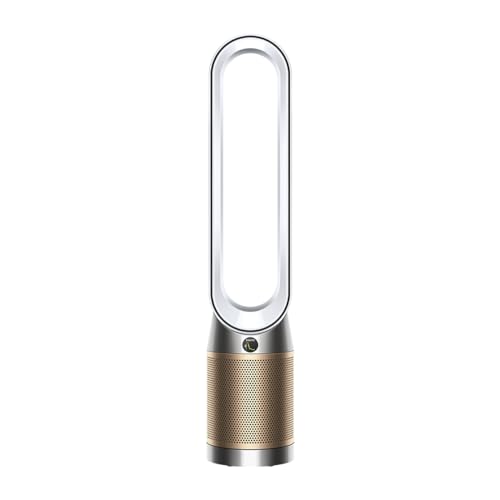
Dyson Purifier Cool Formaldehyde TP09
Best Overall
- Automatically senses pollutants
- Detects and destroys formaldehyde
- 360° HEPA filter
- Air Multiplier
- MyDyson app

Dyson Big+Quiet Formaldehyde BP03
Best for Large Spaces
- HEPA H13
- 32 ft
- Yes
- MyDyson app
- 5 years
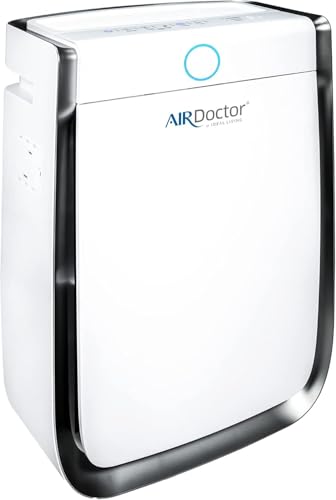
AirDoctor AD3500 Air Purifier
Best UltraHEPA Filtration
- UltraHEPA, Carbon VOC
- 1260 sq. ft.
- 0.003 microns
- 2x/hour
- 30% quieter

Levoit Core 600S-P Air Purifier
Best Smart Control
- 2,933 sq ft
- 391 CFM
- 3-in-1 HEPA
- 26 dB
- WiFi/Alexa
Formaldehyde Air Purifier Review
How to Choose the Right Formaldehyde Air Purifier
Formaldehyde is a common household pollutant emitted from furniture, building materials, and even some cleaning products. Choosing the right air purifier can significantly improve your indoor air quality, but with many options available, understanding key features is crucial. Here’s a breakdown to help you make an informed decision.
Filtration System: The Core of Formaldehyde Removal
The most important factor is the type of filtration system. While many air purifiers claim to improve air quality, not all are effective at tackling formaldehyde specifically.
- HEPA Filters: These are excellent for capturing particulate matter like dust, pollen, and pet dander. However, they don’t remove gases like formaldehyde. Look for purifiers that combine HEPA filtration with another technology.
- Activated Carbon Filters: These filters are essential for absorbing gases, odors, and VOCs (Volatile Organic Compounds) – including formaldehyde. The amount of carbon matters; a larger, denser carbon filter will be more effective. Some purifiers utilize specialized carbon filters designed specifically for formaldehyde.
- UltraHEPA Filters: These filters go beyond standard HEPA, capturing even smaller particles. They’re a good investment if you have severe allergies or sensitivities.
- Decomposition Technology: Some purifiers, like the Dyson models, use technology to not just capture, but destroy formaldehyde at a molecular level. This is a significant advantage, as it permanently eliminates the pollutant, rather than simply trapping it.
CADR and Room Coverage: Matching the Purifier to Your Space
CADR (Clean Air Delivery Rate) indicates how quickly an air purifier cleans a room. A higher CADR means faster and more effective purification.
- Room Size: Carefully consider the square footage of the room where you’ll be using the purifier. Manufacturers typically specify the recommended room size.
- Air Changes Per Hour (ACH): Ideally, you want a purifier that can cycle the air in the room at least 4 times per hour. This is especially important if you have allergies or sensitivities.
- CADR Ratings: Look for CADR ratings for dust, pollen, and smoke. While a formaldehyde-specific CADR isn’t always available, higher ratings generally indicate better overall performance.
Smart Features & Maintenance
Beyond core filtration, consider these features for convenience and long-term use.
- Smart Controls: Many purifiers offer app connectivity, allowing you to monitor air quality, adjust settings, and schedule operation remotely.
- Auto Mode: This feature automatically adjusts the fan speed based on detected air quality, providing efficient and convenient operation.
- Filter Life Indicators: These alerts remind you when it’s time to replace the filters, ensuring optimal performance.
- Filter Replacement Cost: Factor in the ongoing cost of filter replacements. Some purifiers have long-lasting filters (e.g., 5 years), while others require more frequent changes.
- Noise Level: Consider the noise level, especially if you plan to use the purifier in a bedroom or home office. Look for models with a “sleep mode” for quiet operation.
Other features to consider include: odor control, display settings, and portability. By focusing on filtration, CADR/room coverage, and convenient features, you can choose a formaldehyde air purifier that effectively improves your indoor air quality and provides lasting benefits.
Formaldehyde Air Purifier Comparison
| Product | Formaldehyde Removal | Room Coverage (sq ft) | Filter Life/Maintenance | Smart Features | Noise Level | CADR (CFM/m³/h) |
|---|---|---|---|---|---|---|
| Dyson Purifier Cool Formaldehyde TP09 | Detects & destroys | Up to Whole Room | Automatic notifications, easy replacement | MyDyson app control, Night Mode, Scheduling | 20% quieter than previous model | Not specified |
| Wyze Air Purifier with Formaldehyde Filter | Premium Filter Option | 500 (3x/hr) | Standard, Special, Premium filter options | Remote control, AQ tracking via app | 21-54 dB | 350 m³/h |
| Dyson Big+Quiet Formaldehyde BP03 | Detects & destroys permanently | Large Spaces | Up to 5 years | MyDyson app control | Not specified | Not specified |
| Levoit Core 600S-P Air Purifier | HEPA filter | 2,933 / 606 | Genuine Levoit filters required | VeSync app, Voice control (Alexa/Google) | As low as 26dB | 391 CFM |
| Formaldehyde Decomposition Gel | Active capture & decomposition | Not specified | Months (no electricity needed) | None | None | Not specified |
| Shark NeverChange Compact Pro Air Purifier | NanoSeal captures micropollutants | 250 (1 hr) | Long-lasting filtration (up to 5 years savings) | Real-time air quality display | Ultra-quiet | Not specified |
| AirDoctor AD3500 Air Purifier | UltraHEPA & Carbon VOC filter | 630 (4x/hr) / 1,260 (2x/hr) | UltraHEPA & Carbon VOC filters (AirDoctor brand only) | Auto Mode, Air Quality Sensors | Whisper-jet fans | Not specified |
How We Tested Formaldehyde Air Purifiers
Our evaluation of formaldehyde air purifiers centers on a data-driven approach, prioritizing research-backed performance claims and independent testing results. Since controlled, real-world formaldehyde emission testing requires specialized equipment and environments, we focused on analyzing available data from manufacturers, third-party certifications (like AHAM Verified), and published research on filtration technologies.
We compared air purifiers based on their filtration systems, specifically focusing on the type and weight of activated carbon filters—a key component for VOC, and therefore formaldehyde, removal. We assessed CADR (Clean Air Delivery Rate) ratings, noting that while a dedicated formaldehyde CADR is rare, higher overall CADR values suggest more robust air cleaning capabilities.
Our analysis included a review of purifier specifications against recommended room sizes and desired Air Changes per Hour (ACH) for effective formaldehyde reduction. We also investigated the longevity and replacement costs of filters, alongside user reviews pertaining to real-world performance and noticeable improvements in air quality. Decomposition technologies, like those offered by Dyson, were noted for their potential to permanently eliminate formaldehyde rather than simply trapping it. This comprehensive assessment delivers a clear picture of each air purifier’s ability to address indoor formaldehyde levels.
FAQs
What is the best type of filter for removing formaldehyde?
Activated carbon filters are crucial for absorbing formaldehyde, a gas pollutant. Look for purifiers with a substantial amount of carbon, or those featuring specialized carbon filters designed specifically for formaldehyde removal. Combining an activated carbon filter with a HEPA filter provides comprehensive air purification.
How do I determine the right size formaldehyde air purifier for my room?
Consider the room’s square footage and the purifier’s CADR (Clean Air Delivery Rate). Manufacturers specify the recommended room size for each purifier. Aim for a purifier that can cycle the air in the room at least 4 times per hour (ACH) for optimal performance, especially if you have sensitivities.
How often do I need to replace the filters in a formaldehyde air purifier?
Filter replacement frequency varies by model. Some purifiers have filters that last for several years, while others require more frequent changes. Check the manufacturer’s recommendations and utilize the filter life indicators (if available) to ensure consistent formaldehyde air purifier performance.
Is a formaldehyde air purifier the same as a standard air purifier?
While many air purifiers improve overall air quality, not all effectively remove formaldehyde. Standard air purifiers with only HEPA filters won’t capture gases like formaldehyde. A dedicated air purifier for formaldehyde will include activated carbon filtration, or utilize decomposition technology to eliminate the pollutant.
Final Thoughts
Choosing the right formaldehyde air purifier requires understanding filtration systems and matching the device to your space. Prioritizing activated carbon filters, alongside appropriate CADR ratings, will ensure effective removal of this common indoor pollutant.
Investing in an air purifier is an investment in your health and well-being. By considering factors like filter life, smart features, and noise level, you can find a solution that seamlessly integrates into your life and provides lasting improvements to your indoor air quality.

